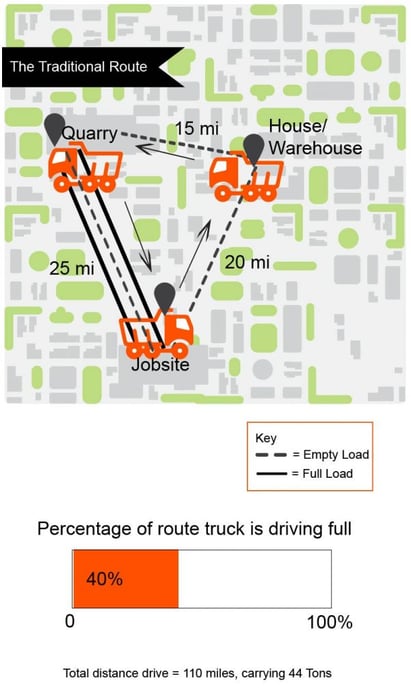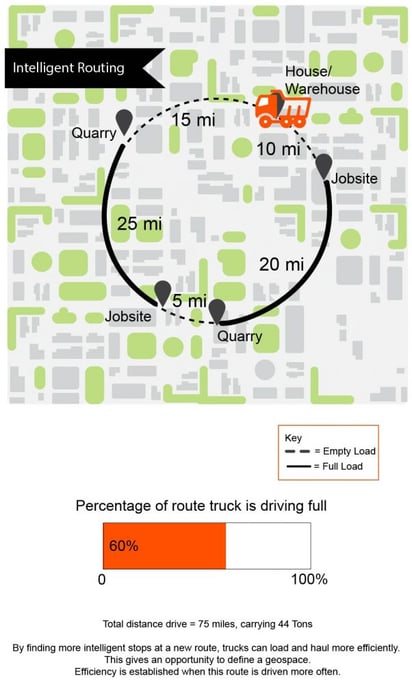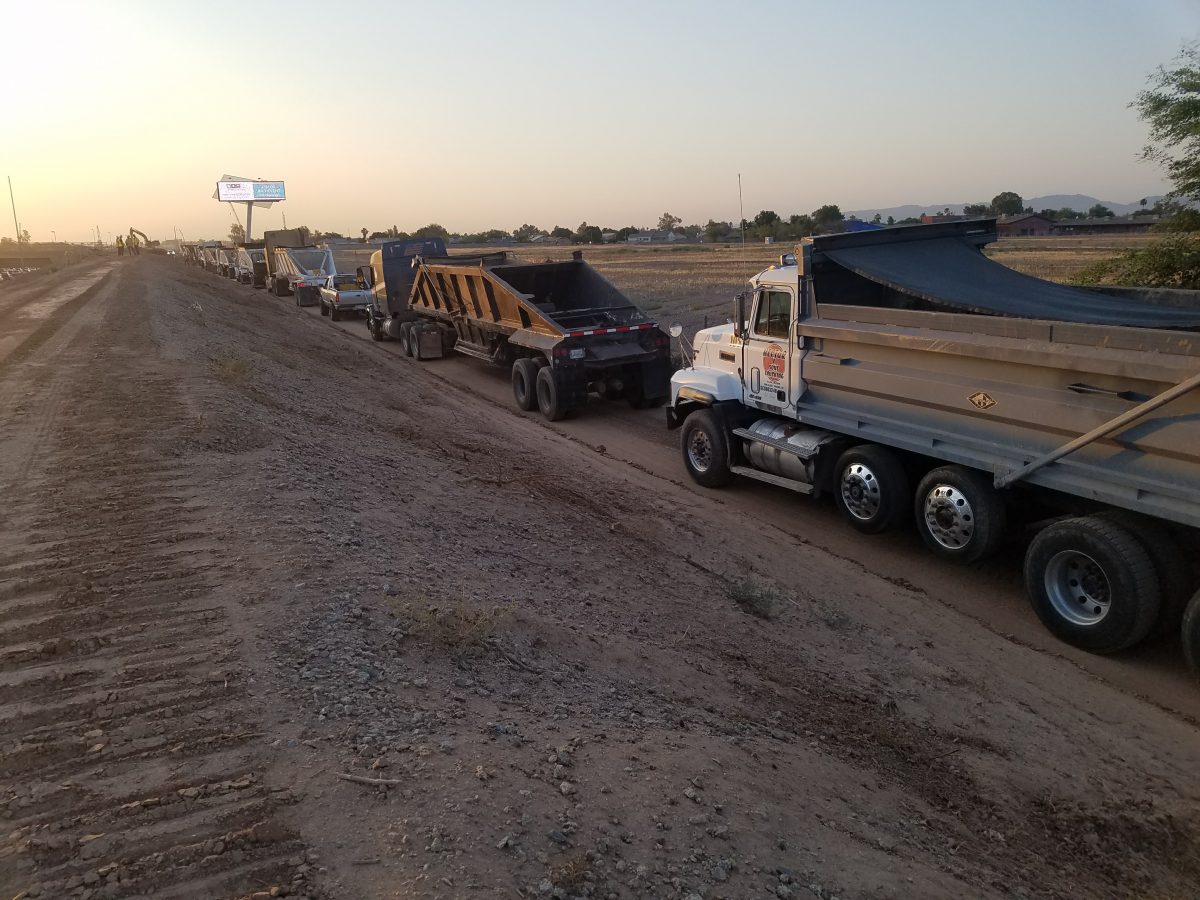The supply and demand balance in the dump truck industry isn’t quite as clear-cut as some other industries. “It’s a closed market that hoards supply,” says Donald Lee, Trux Chief Services Delivery Officer. The way dump truck businesses work has been set in stone for the past 40 years. Contractors usually reference a list of preferred truckers, giving preference to certain truckers. These decisions aren’t necessarily based on data. A marketplace backed by data would accelerate clear-cut decisions and help plan and optimize a project from start to finish.
One of the biggest problems in the dump truck industry lies in truck utilization. Roughly 40% of the time trucks are out on the road running fuel with a full load, meaning that 60% of the time they are running empty. This leaves quite a bit of room for improvement. To create a more balanced market trucking companies need to find creative and strategic solutions that keep trucks on the road - with full loads.
The Question of High Demand
Most anyone who works in the construction business will tell you that demand is extremely high. But getting jobs filled is another question. About 80% of U.S. construction firms can’t find enough haulers to fill their jobs.
Finding creative solutions to fill in the gaps for unemployment is not only possible but even currently practiced with strategies like constructuring. This is where a company trains unskilled labor when there is a shortage of skilled truckers. Essentially, it’s a way to combat unskilled labor shortages. Research indicates that the construction industry is one of the highest demanding industries requiring experience, but with programs like these, companies are backing their assets. By thinking outside of the box, companies can fill the demand with the supply they need through incentive and training programs. This brings dump truck supply and demand one step closer to a balance.
How Can We Improve Supply/Demand in Construction?
While a total market equilibrium may not be possible or beneficial for an industry like construction, improving the relationship between supply-demand helps all stakeholders. Improving the Supply/Demand balance will require:
- Contractors, Material Producers, Fleet Owners, and Independent Dump Truck Owners must begin to use data in their everyday decisions
- Demand on the market must be planned weeks or months ahead of time
- Scheduling of supply must happen sooner to have in the hands of projects/customers
Using these tactics means that you can begin to understand the means of a whole market, rather than individual players. Through technology like Trux, the overall health of the market will improve over time. Markets will be able to shift based on times when there is greater demand and bring in more trucks. The ability to scale back or shift an overabundance of trucks also becomes possible with proper planning.
Taking it A Step Further with Optimized Routing
Establishing route efficiencies within given geospace can help take supply/demand balance to the next level. Today most short-haul truckers drive to a quarry, plant, or pit with an empty truck, then continue on to a job site with a loaded truck, and back to the quarry with an empty truck. This means they are only driving 40% of the way with a full load. By making more strategically mapped stops, like other job sites or quarries on the way, you could increase the efficiency of a day’s work by 20%.


TRUX Creates Healthier Supply / Demand Balance
Trux presents an opportunity for contractors to post jobs to the marketplace and shift to a more proactive approach to logistics. With properly planned jobs, and engaging job post descriptions, contractors can fill shifts instantly - securing supply for their largest projects.. They can manage posted jobs, run digital dispatches, and view cycle time reports. With Trux, fleet owners and independent-owners are able to schedule their time and select jobs that best fit their schedule. If your business requires dump trucks and you are in a market in our footprint, check out how Trux can help you!



